Somewhere on the great plain of Martha’s Vineyard death and the heath hen have met. One day, just as usual, there was a bird called the heath hen, and the next day there was none. How he came to his end no human being can know. But the death of wild birds is a violent death. The eye becomes dimmed, the beat of the wings lags ever so little, the star of fortune blinds for a fraction of a second it is enough. An enemy strikes and death has come. Somewhere on the great plain, under the black twigs of a scrub oak, in the open track of an old road, near some hawks sentinel post on a blighted pine, swift death and the heath hen have met.
Absent from Immemorial Tryst
The bird has been reported dead many times before, only to reappear dramatically in spring. But there have never been circumstances like this. Not one of the men who have watched the heath hen in the last years of its existence now believes it to be alive. James Green, whose observations have been the surest reliance, has not seen it for more than a year. Every spring the last of the race has come to the field on Mr. Green’s farm at West Tisbury to keep an immemorial tryst; almost to the very day and hour it has appeared and reappeared, during what used to be the mating season. This should have been an annual tryst with life, the occasion of a strange dance and ritual, “a vital, virile expression of the Fecundity of Mother Earth . . . a rune of reproduction,” but it had ceased to be that. The lone heath hen had given over all the grotesque pomp and ceremony of spring dawns and dusks. Still, the tryst in the field it had never failed to keep until this year. Only one compulsion could have interfered - the heath hen had already fulfilled an even more urgent engagement.
The official report of Dr. Alfred O. Gross announcing the apparent extinction of the heath hen is first published in this issue of the Vineyard Gazette through the courtesy of Doctor Gross and the state Division of Fisheries and Game.
This eastern prairie chicken, pinnated grouse, heath hen or tympanuchus cupido cupido - to give it all its names - was once bountiful throughout the east. It was especially abundant from Massachusetts to New Jersey, and since it flourished in the scrub and cut-over country rather than in the forest, it might have increased and prospered as the nation builders began changing the new country to suit their purposes. Unfortunately, however, although known as a game bird, the heath hen was easy to kill. It had as enemies the fox, and the hawk, but most of all the cat and man.
Long Ago Extinct on Mainland
Such was the slaughter of the heath hen in the early days that it was virtually, and perhaps entirely, extinct on the mainland a hundred years ago. That left the flock on Martha’s Vineyard the only reserve against extinction.
To understand the history of the bird on the Island, one must understand the great plain, a broad expanse of terrace drift left by the glacier a great while ago. Although the plain, at first glance, seems a level or slightly rolling tract of impressive distance, it is really grooved and furrowed by the tracks of subglacial streams which had to force their way to the sea. Spring comes late on the plain, and the first tardy budding takes place on the higher undulations while the shallow grooves are still black with winter. This makes it seem as if the fingers of a giant hand had been laid across the land. The lateness of the spring is one of the indirect causes of the heath hen’s extinction.
The great plain comprises some 40 square miles and all the grandeur that level places can convey. It has no counterpart in New England. Distant hills in the west are blue, and for the rest the eye sees only apparently limitless reaches of scrub oak, for scrub oak alone - except in a newly launched state forest can grow on the plain. There are occasional blasted pines, left lifeless by the latest fire, and once in a while some other queerly postured tree standing above the interminable thickets. Sweet fern and huckleberries grow on the plain, and many ancient cart tracks and roads traverse it.
History associates tall pines, spruces and cedars with this region, but for many generations scrub oak has reigned alone as it reigns now. This is because the roots of the scrub oak are peculiarly resistant to fire, and fire has been the scourge of the plain for many generations. No other trees can grow. The devastating fires which have so often swept the plain land have been due sometimes to carelessness, and sometimes to a desire for better blueberries. But for the basic factor one must look to the tardiness with which a spring comes to the plain.
Dangerous Interval
After winter goes, the plain is still black, and it is dried by the suns of April. The rest of the Island comes to life, but the plain lags behind, and there follows a dangerous interval in which the whole region is like tinder, ready to feed a sweeping tide of fire. If this interval can be safely passed, the creatures of the plains are safe again. But dozens of times - at least once in every decade Ñ broad areas, and sometimes the entire plain, have been burned over.
Therefore, although the scrub oak of the great plain supplied ideal cover and environment for the heath hen, the very reason for the existence of this tremendous scrub oak thicket was one which menaced the bird’s security. It was, in fact, fire which made extinction for the heath hen finally certain.
Even after the heath hen were protected, half heartedly, by state law, about a century ago, they were hunted on the Vineyard by virtue of suspensions of the law which individual towns were empowered to make. Then, for many years, all protection was removed. Still the birds survived. So extensive was the scrub oak that no man or dog hunted over all of it, and somehow the broods of young managed through the years to escape the spring fires. Had it not been for three enemies fire, cat and man there is no doubt that the heath hen would have increased and flourished. Hawks, too, were enemies, but against the hawk the heath hen had a better defense. Let a hawk appear in the sky and the heath hen would freeze into perfect silence, and so marvelous was its protective coloration that it would disappear from the most searching eye simply by cessation of movement, or by crouching.
Doubtless the heath hen tried this method of protecting itself against fire. As the rim of the blaze came on, crackling, terrifying, shedding clouds of hot yellow and white smoke which made the air suffocating, the mother bird and her chicks would crouch and wait. And when the fire had passed there would be a circle of blackened bodies to be picked by the scavengers of the plain.
If fire came when the heath hen were on their nests, the mother birds would not move. Some commenters think there has been too much sentimentalizing over the heath hen, and of course it cannot be implied that there was any heroism in the instinctive devotion which made the mother birds die rather than leave the eggs which were under their bodies. Heath hen could do nothing else, for nature had not put it within the power of these lower animals to betray.





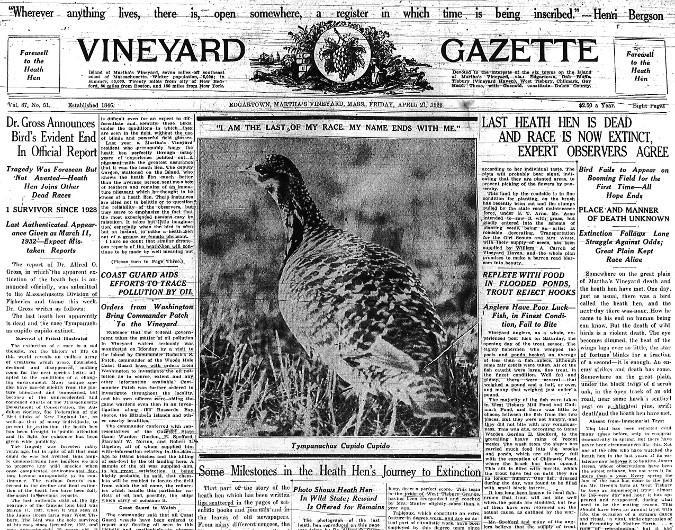
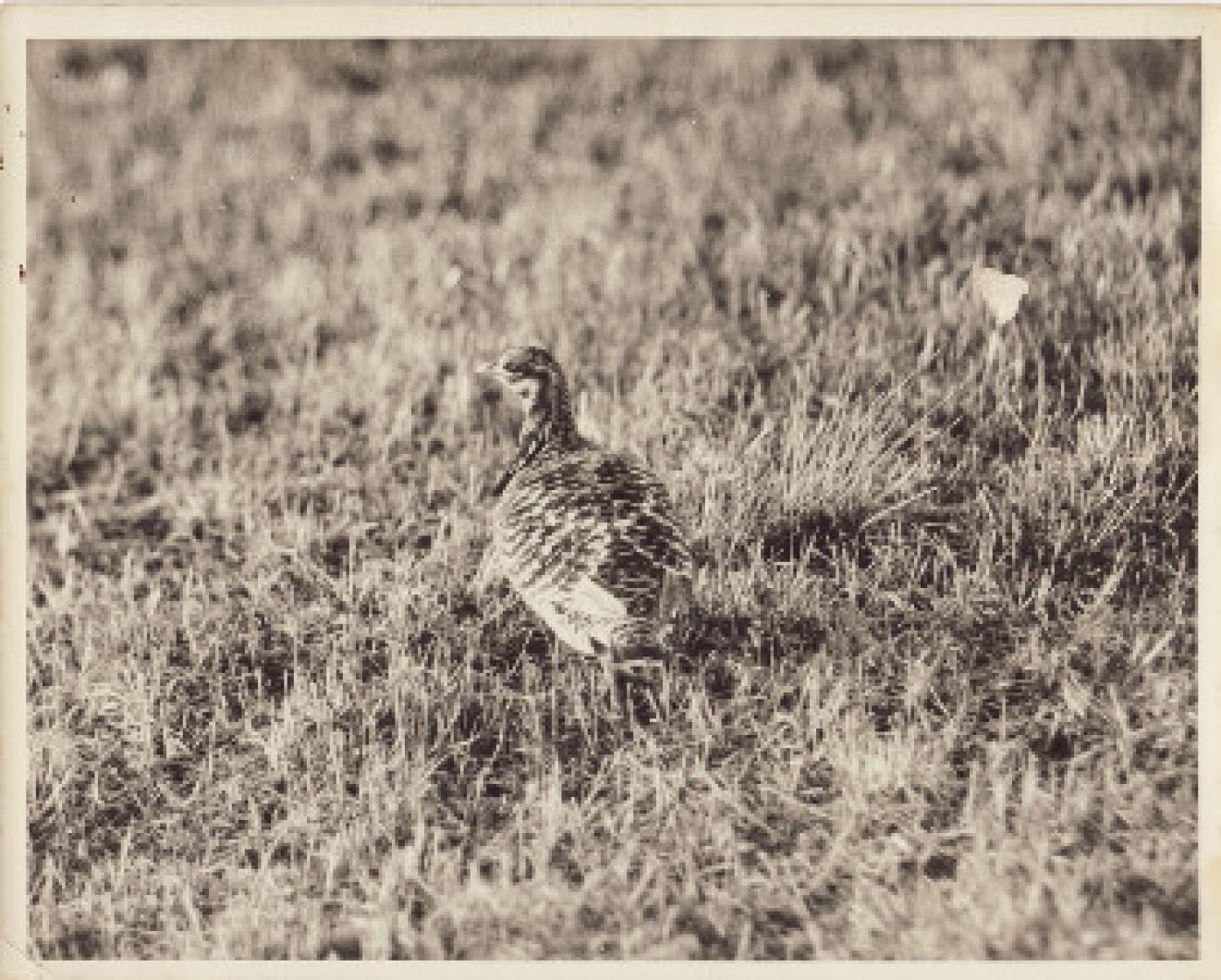
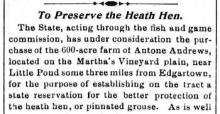

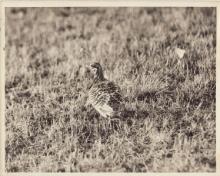
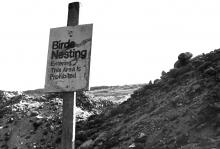
Comments